MG529 Strategic Marketing: Tesco's Market Analysis, PESTLE & SWOT
VerifiedAdded on 2023/06/17
|13
|862
|127
Report
AI Summary
This report provides a comprehensive analysis of Tesco's strategic marketing approach. It examines the company's market size and trends, competitor landscape using Porter's Five Forces, and macro and micro environmental factors through PESTLE and SWOT analyses. The report also delves into customer segmentation, targeting, and positioning (STP), stakeholder analysis, and marketing objectives. Key findings highlight the importance of understanding both external and internal factors to develop effective marketing strategies and achieve sales growth and product innovation. The conclusion emphasizes the practical application of strategic marketing tools for Tesco to navigate market challenges and capitalize on opportunities.
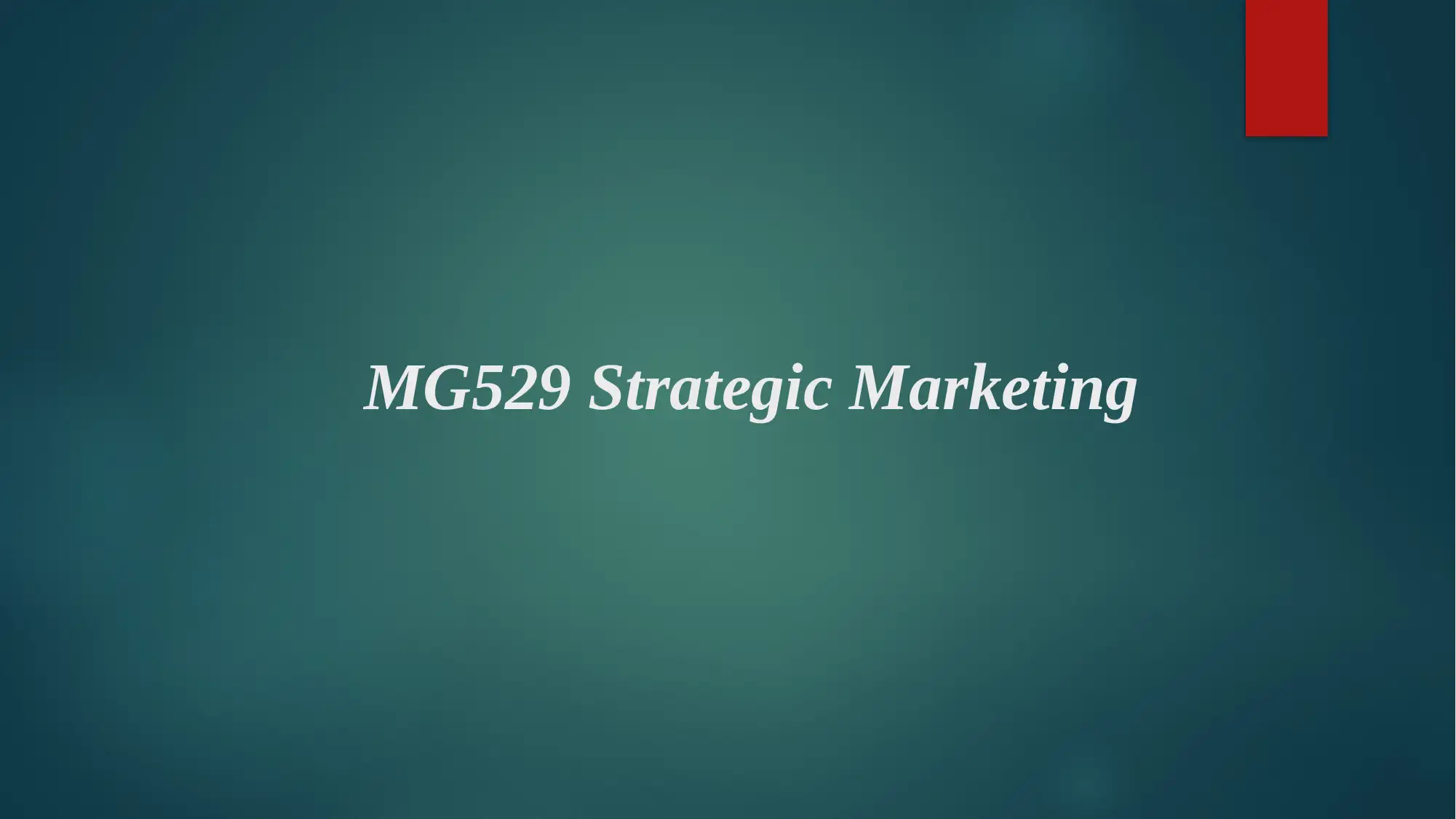
MG529 Strategic Marketing
Paraphrase This Document
Need a fresh take? Get an instant paraphrase of this document with our AI Paraphraser
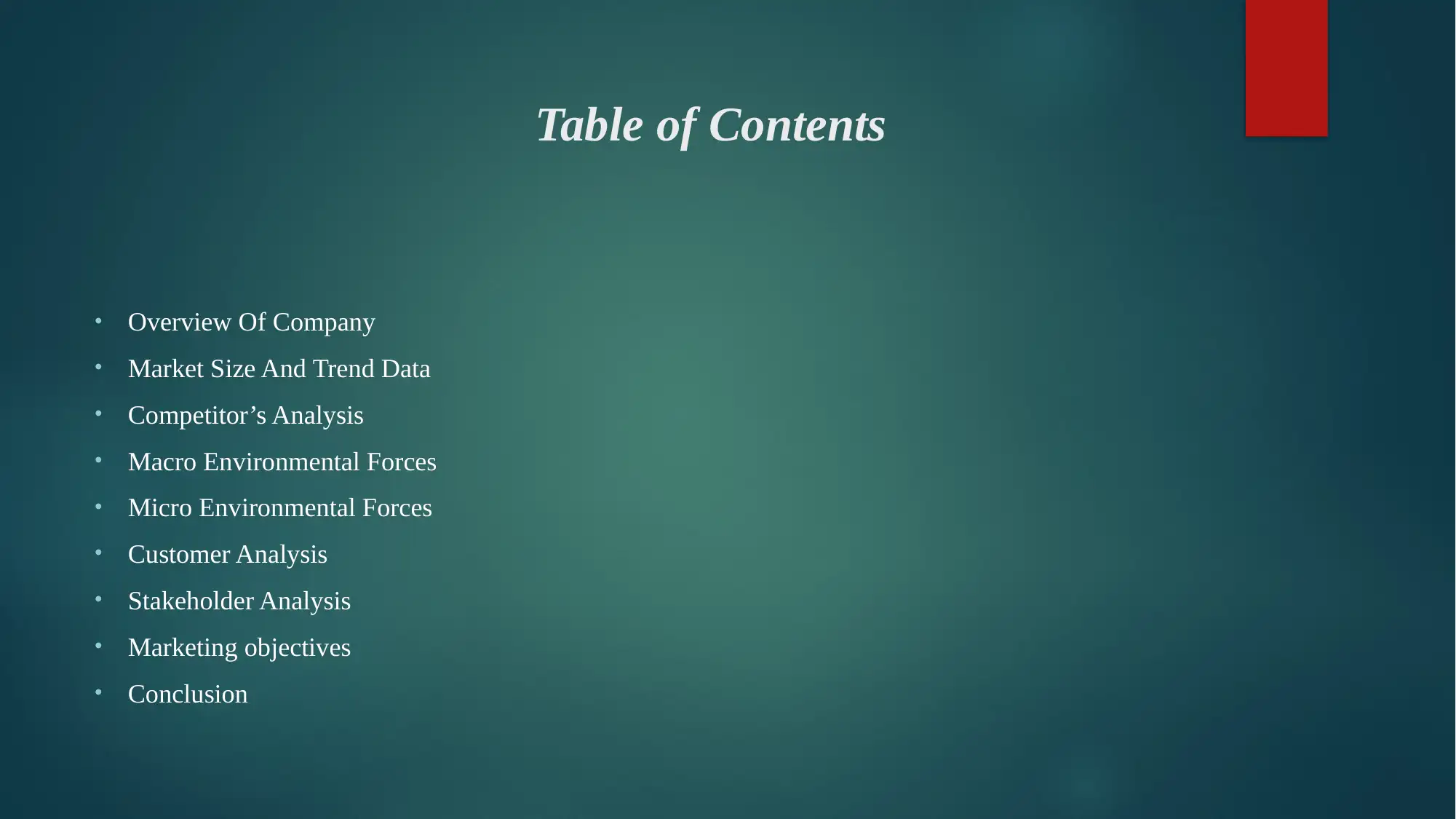
Table of Contents
• Overview Of Company
• Market Size And Trend Data
• Competitor’s Analysis
• Macro Environmental Forces
• Micro Environmental Forces
• Customer Analysis
• Stakeholder Analysis
• Marketing objectives
• Conclusion
• Overview Of Company
• Market Size And Trend Data
• Competitor’s Analysis
• Macro Environmental Forces
• Micro Environmental Forces
• Customer Analysis
• Stakeholder Analysis
• Marketing objectives
• Conclusion
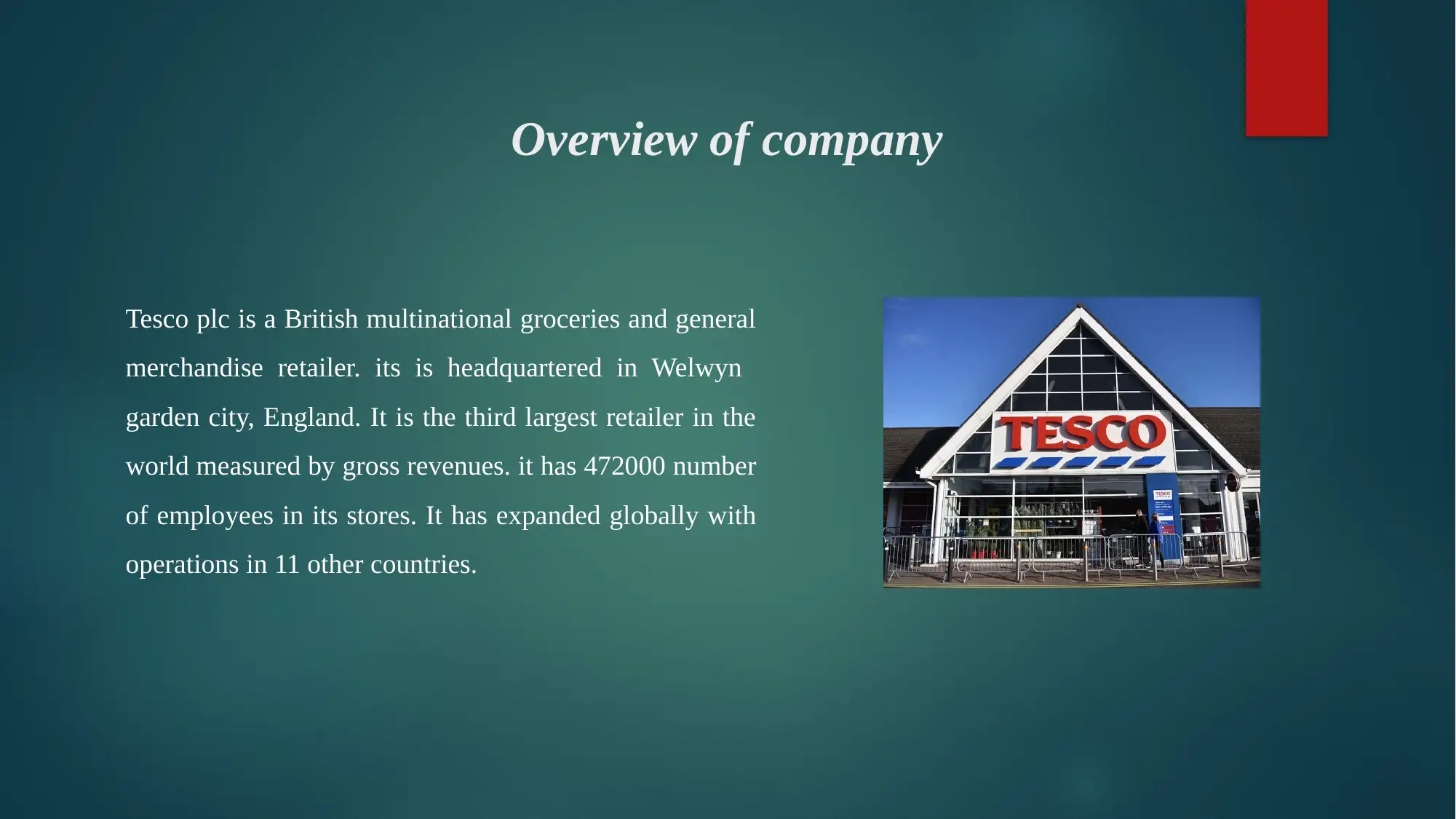
Overview of company
Tesco plc is a British multinational groceries and general
merchandise retailer. its is headquartered in Welwyn
garden city, England. It is the third largest retailer in the
world measured by gross revenues. it has 472000 number
of employees in its stores. It has expanded globally with
operations in 11 other countries.
Tesco plc is a British multinational groceries and general
merchandise retailer. its is headquartered in Welwyn
garden city, England. It is the third largest retailer in the
world measured by gross revenues. it has 472000 number
of employees in its stores. It has expanded globally with
operations in 11 other countries.
⊘ This is a preview!⊘
Do you want full access?
Subscribe today to unlock all pages.

Trusted by 1+ million students worldwide
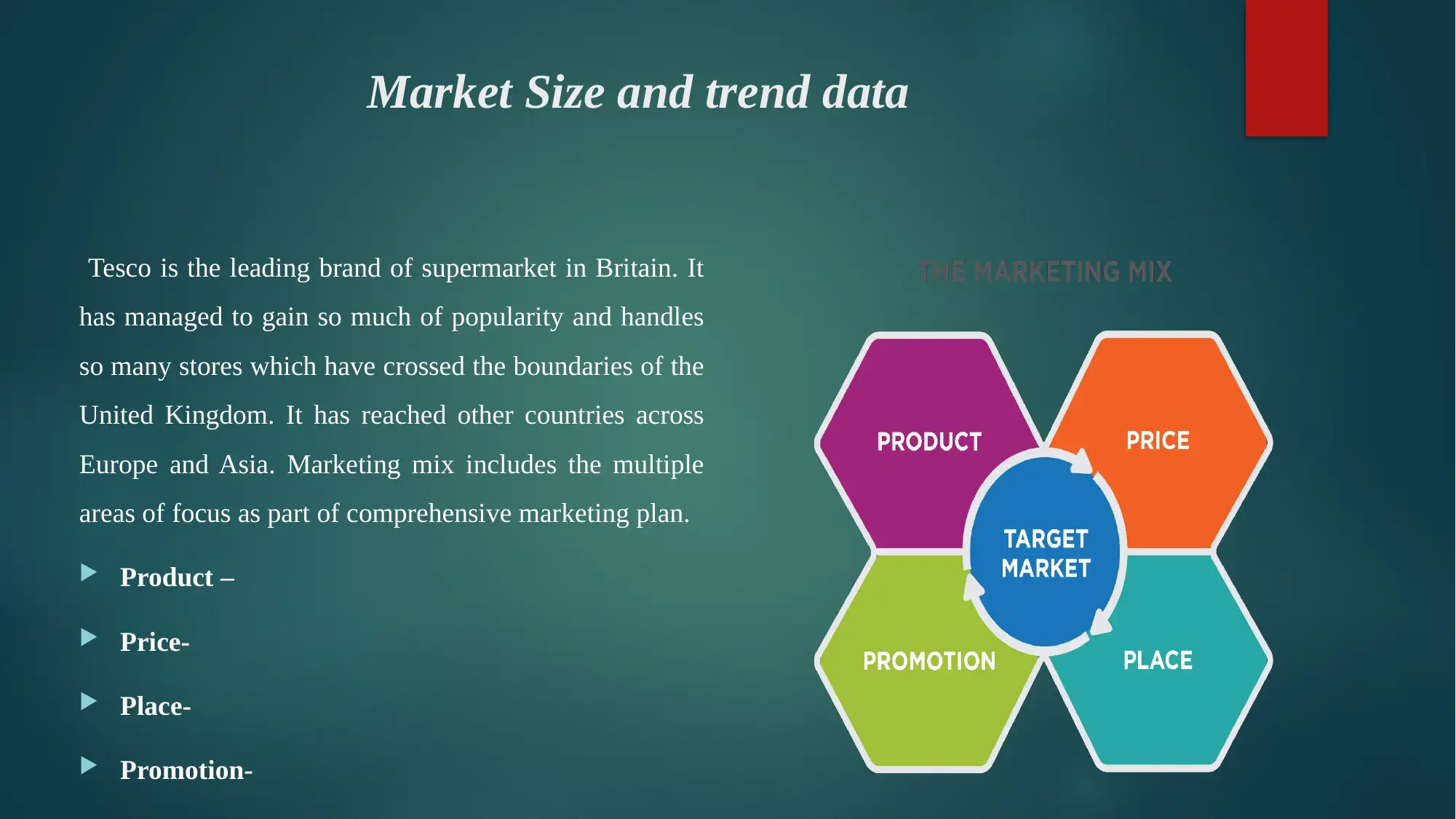
Market Size and trend data
Tesco is the leading brand of supermarket in Britain. It
has managed to gain so much of popularity and handles
so many stores which have crossed the boundaries of the
United Kingdom. It has reached other countries across
Europe and Asia. Marketing mix includes the multiple
areas of focus as part of comprehensive marketing plan.
Product –
Price-
Place-
Promotion-
Tesco is the leading brand of supermarket in Britain. It
has managed to gain so much of popularity and handles
so many stores which have crossed the boundaries of the
United Kingdom. It has reached other countries across
Europe and Asia. Marketing mix includes the multiple
areas of focus as part of comprehensive marketing plan.
Product –
Price-
Place-
Promotion-
Paraphrase This Document
Need a fresh take? Get an instant paraphrase of this document with our AI Paraphraser
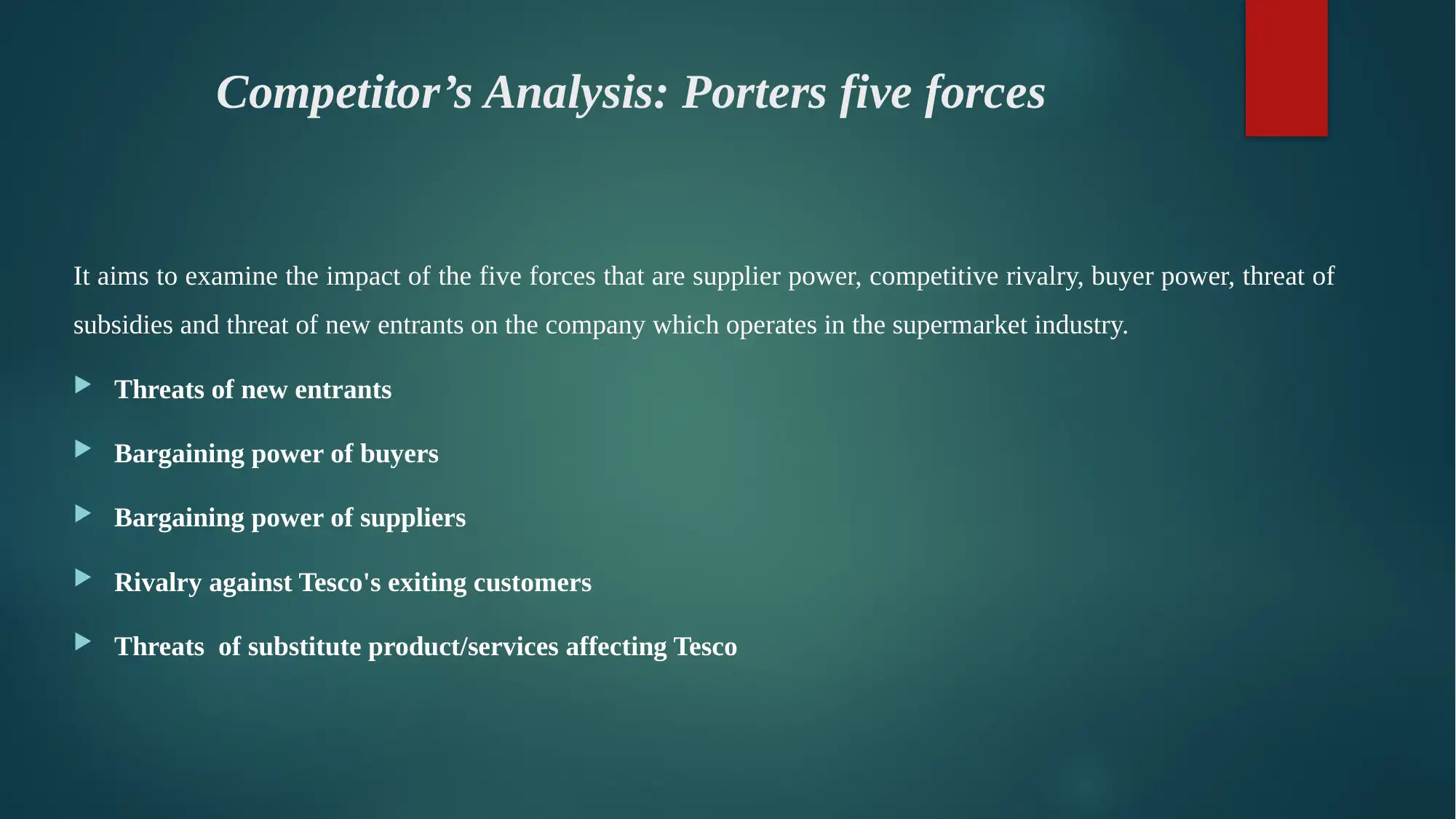
Competitor’s Analysis: Porters five forces
It aims to examine the impact of the five forces that are supplier power, competitive rivalry, buyer power, threat of
subsidies and threat of new entrants on the company which operates in the supermarket industry.
Threats of new entrants
Bargaining power of buyers
Bargaining power of suppliers
Rivalry against Tesco's exiting customers
Threats of substitute product/services affecting Tesco
It aims to examine the impact of the five forces that are supplier power, competitive rivalry, buyer power, threat of
subsidies and threat of new entrants on the company which operates in the supermarket industry.
Threats of new entrants
Bargaining power of buyers
Bargaining power of suppliers
Rivalry against Tesco's exiting customers
Threats of substitute product/services affecting Tesco
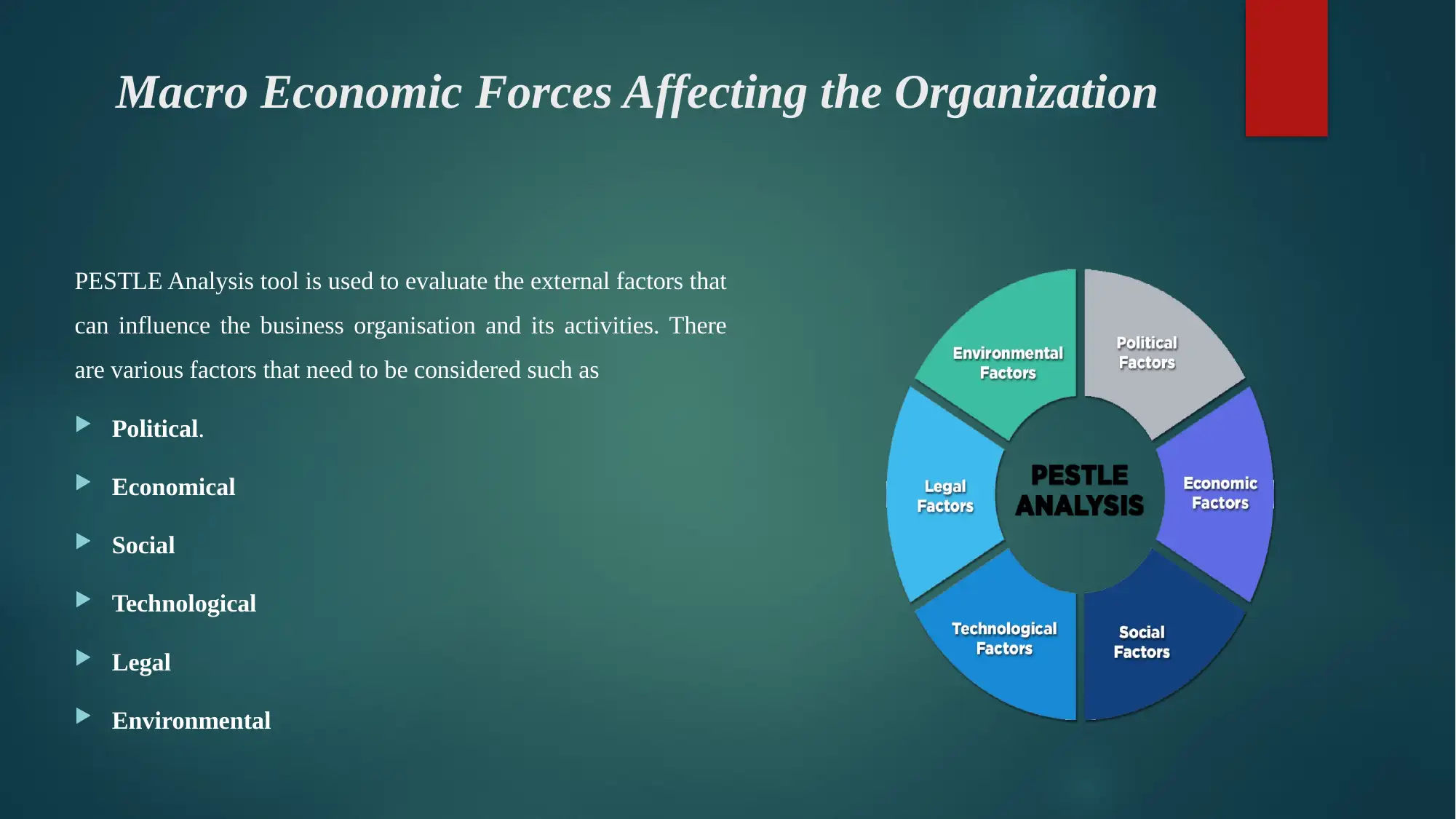
Macro Economic Forces Affecting the Organization
PESTLE Analysis tool is used to evaluate the external factors that
can influence the business organisation and its activities. There
are various factors that need to be considered such as
Political.
Economical
Social
Technological
Legal
Environmental
PESTLE Analysis tool is used to evaluate the external factors that
can influence the business organisation and its activities. There
are various factors that need to be considered such as
Political.
Economical
Social
Technological
Legal
Environmental
⊘ This is a preview!⊘
Do you want full access?
Subscribe today to unlock all pages.

Trusted by 1+ million students worldwide
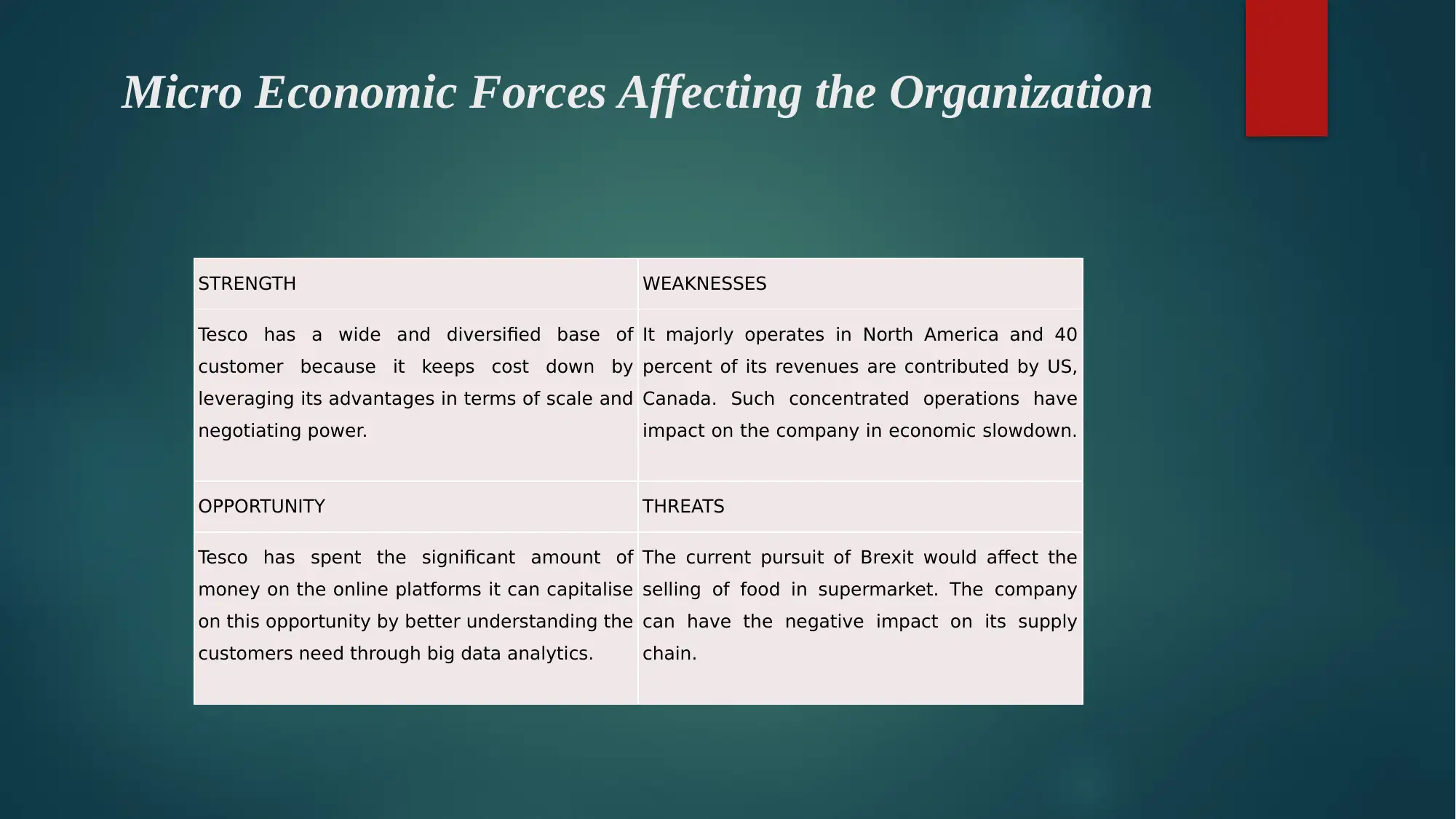
Micro Economic Forces Affecting the Organization
STRENGTH WEAKNESSES
Tesco has a wide and diversified base of
customer because it keeps cost down by
leveraging its advantages in terms of scale and
negotiating power.
It majorly operates in North America and 40
percent of its revenues are contributed by US,
Canada. Such concentrated operations have
impact on the company in economic slowdown.
OPPORTUNITY THREATS
Tesco has spent the significant amount of
money on the online platforms it can capitalise
on this opportunity by better understanding the
customers need through big data analytics.
The current pursuit of Brexit would affect the
selling of food in supermarket. The company
can have the negative impact on its supply
chain.
STRENGTH WEAKNESSES
Tesco has a wide and diversified base of
customer because it keeps cost down by
leveraging its advantages in terms of scale and
negotiating power.
It majorly operates in North America and 40
percent of its revenues are contributed by US,
Canada. Such concentrated operations have
impact on the company in economic slowdown.
OPPORTUNITY THREATS
Tesco has spent the significant amount of
money on the online platforms it can capitalise
on this opportunity by better understanding the
customers need through big data analytics.
The current pursuit of Brexit would affect the
selling of food in supermarket. The company
can have the negative impact on its supply
chain.
Paraphrase This Document
Need a fresh take? Get an instant paraphrase of this document with our AI Paraphraser
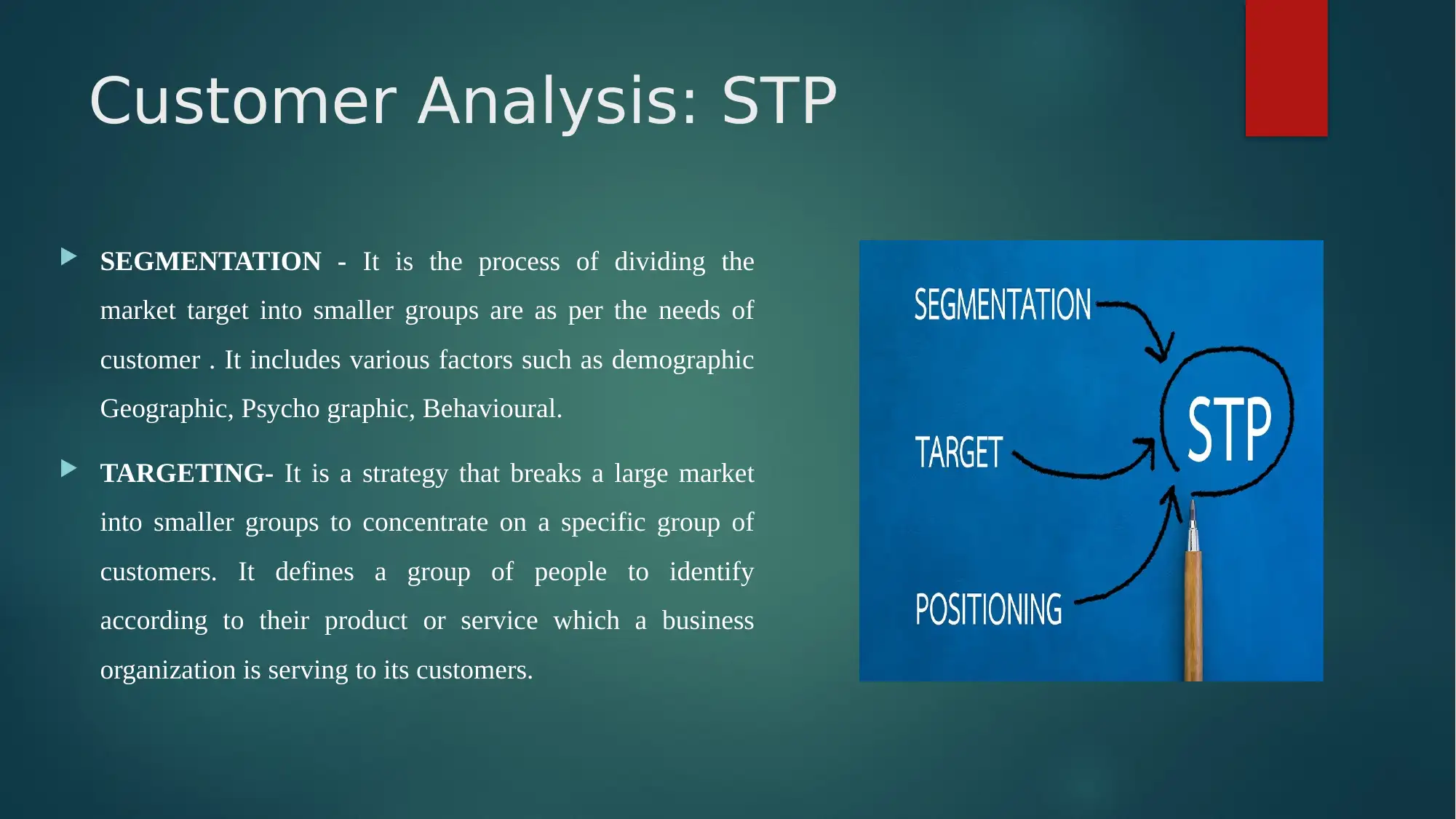
Customer Analysis: STP
SEGMENTATION - It is the process of dividing the
market target into smaller groups are as per the needs of
customer . It includes various factors such as demographic
Geographic, Psycho graphic, Behavioural.
TARGETING- It is a strategy that breaks a large market
into smaller groups to concentrate on a specific group of
customers. It defines a group of people to identify
according to their product or service which a business
organization is serving to its customers.
SEGMENTATION - It is the process of dividing the
market target into smaller groups are as per the needs of
customer . It includes various factors such as demographic
Geographic, Psycho graphic, Behavioural.
TARGETING- It is a strategy that breaks a large market
into smaller groups to concentrate on a specific group of
customers. It defines a group of people to identify
according to their product or service which a business
organization is serving to its customers.
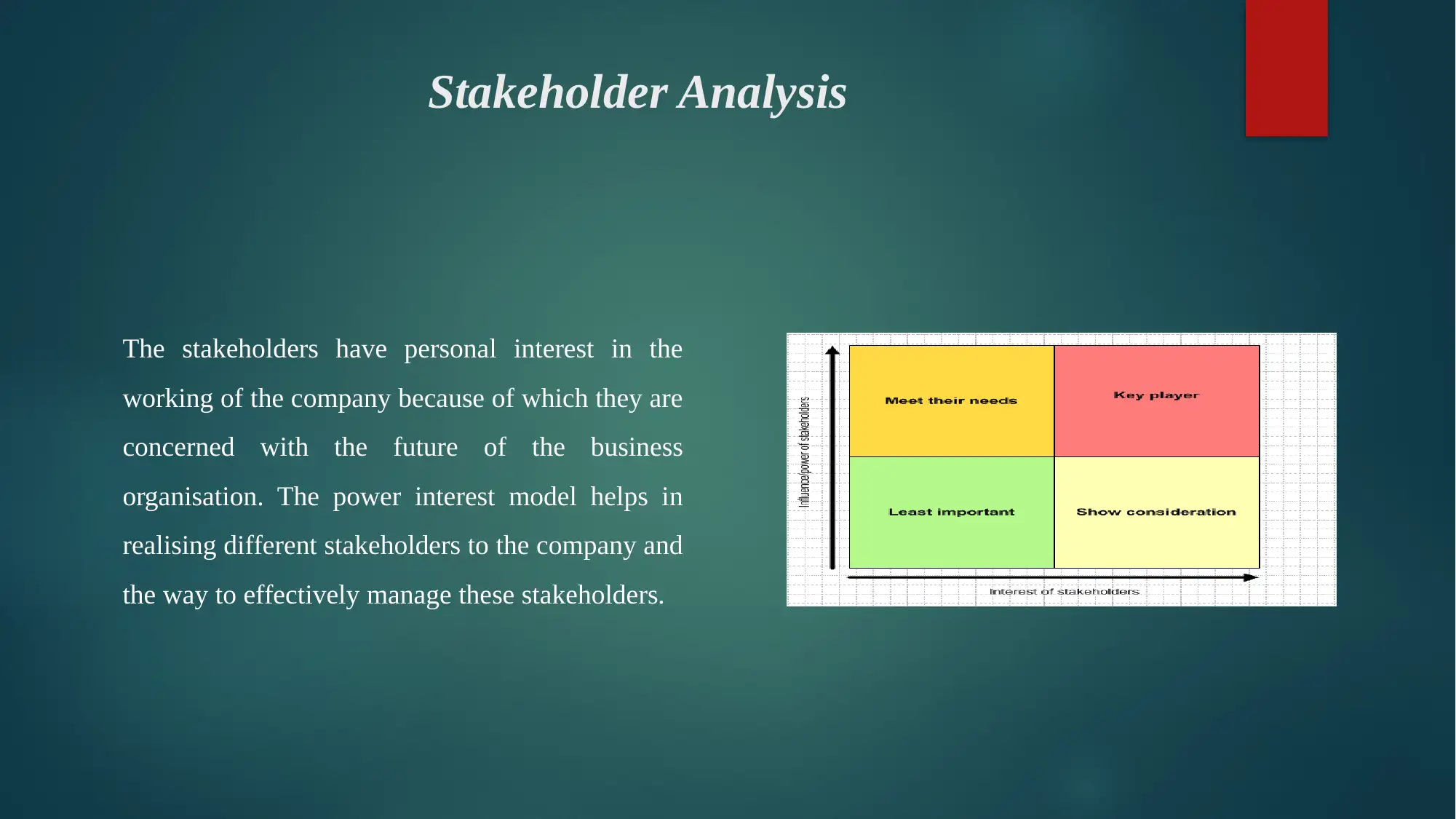
Stakeholder Analysis
The stakeholders have personal interest in the
working of the company because of which they are
concerned with the future of the business
organisation. The power interest model helps in
realising different stakeholders to the company and
the way to effectively manage these stakeholders.
The stakeholders have personal interest in the
working of the company because of which they are
concerned with the future of the business
organisation. The power interest model helps in
realising different stakeholders to the company and
the way to effectively manage these stakeholders.
⊘ This is a preview!⊘
Do you want full access?
Subscribe today to unlock all pages.

Trusted by 1+ million students worldwide
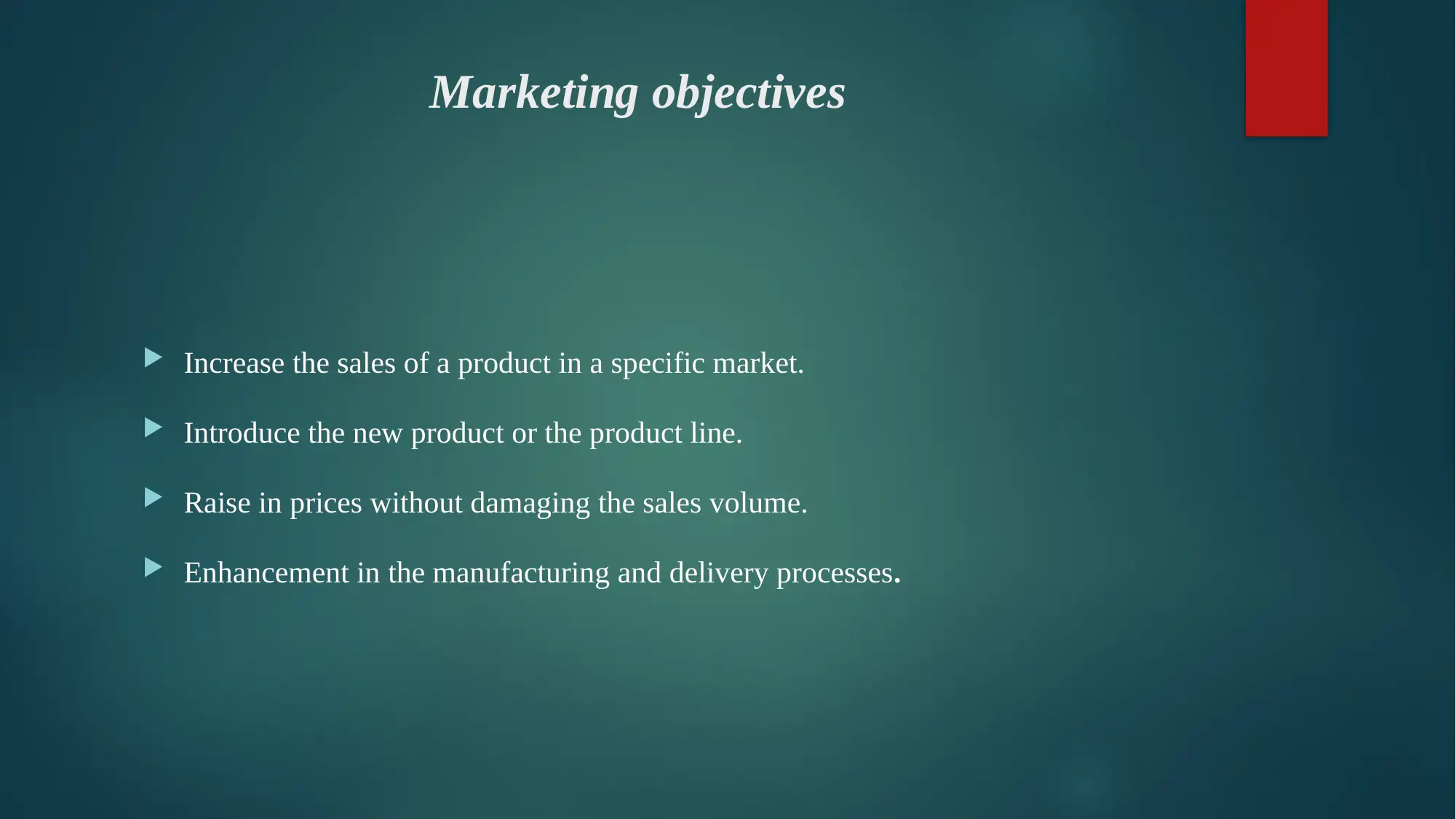
Marketing objectives
Increase the sales of a product in a specific market.
Introduce the new product or the product line.
Raise in prices without damaging the sales volume.
Enhancement in the manufacturing and delivery processes.
Increase the sales of a product in a specific market.
Introduce the new product or the product line.
Raise in prices without damaging the sales volume.
Enhancement in the manufacturing and delivery processes.
Paraphrase This Document
Need a fresh take? Get an instant paraphrase of this document with our AI Paraphraser
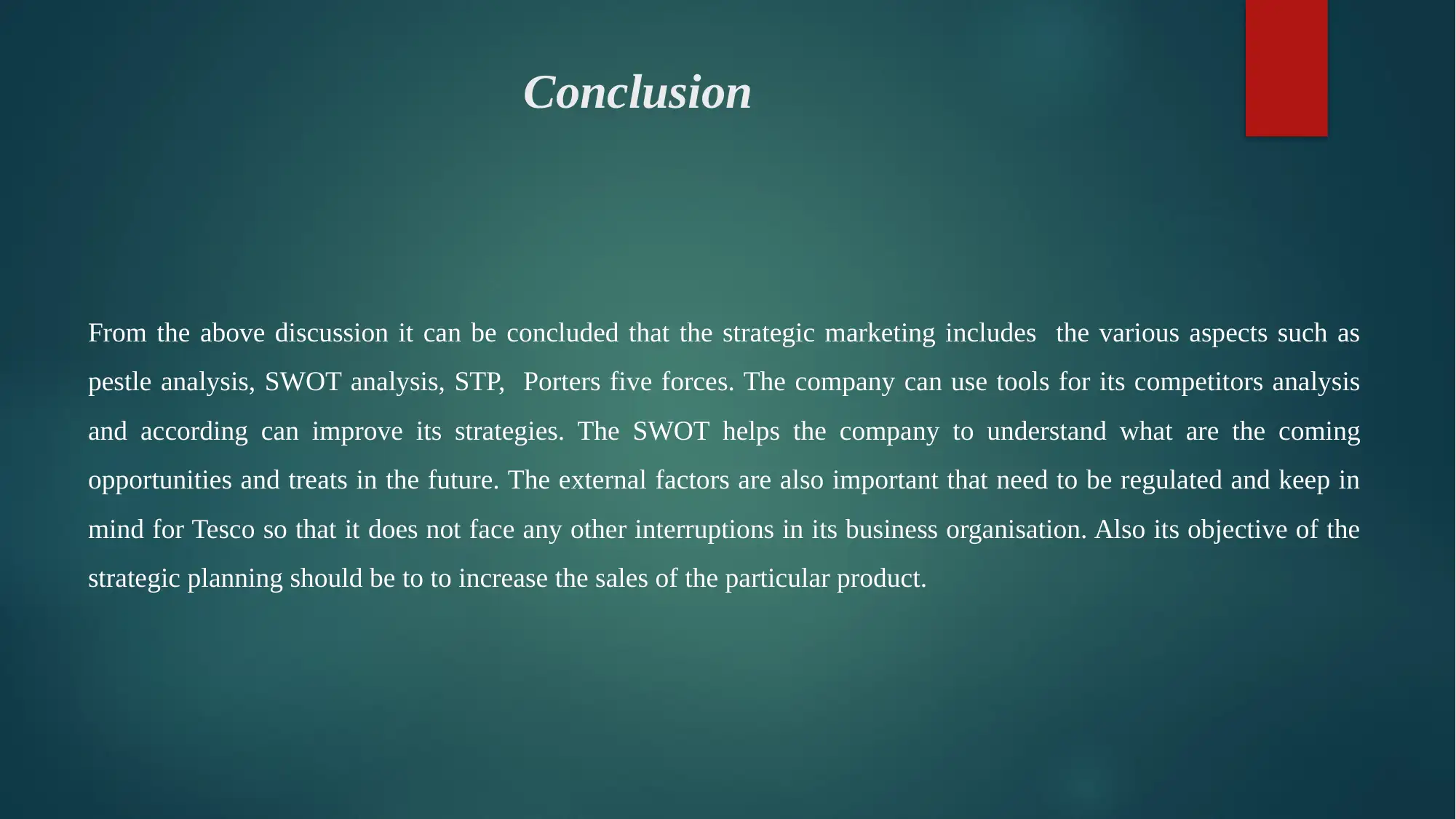
Conclusion
From the above discussion it can be concluded that the strategic marketing includes the various aspects such as
pestle analysis, SWOT analysis, STP, Porters five forces. The company can use tools for its competitors analysis
and according can improve its strategies. The SWOT helps the company to understand what are the coming
opportunities and treats in the future. The external factors are also important that need to be regulated and keep in
mind for Tesco so that it does not face any other interruptions in its business organisation. Also its objective of the
strategic planning should be to to increase the sales of the particular product.
From the above discussion it can be concluded that the strategic marketing includes the various aspects such as
pestle analysis, SWOT analysis, STP, Porters five forces. The company can use tools for its competitors analysis
and according can improve its strategies. The SWOT helps the company to understand what are the coming
opportunities and treats in the future. The external factors are also important that need to be regulated and keep in
mind for Tesco so that it does not face any other interruptions in its business organisation. Also its objective of the
strategic planning should be to to increase the sales of the particular product.
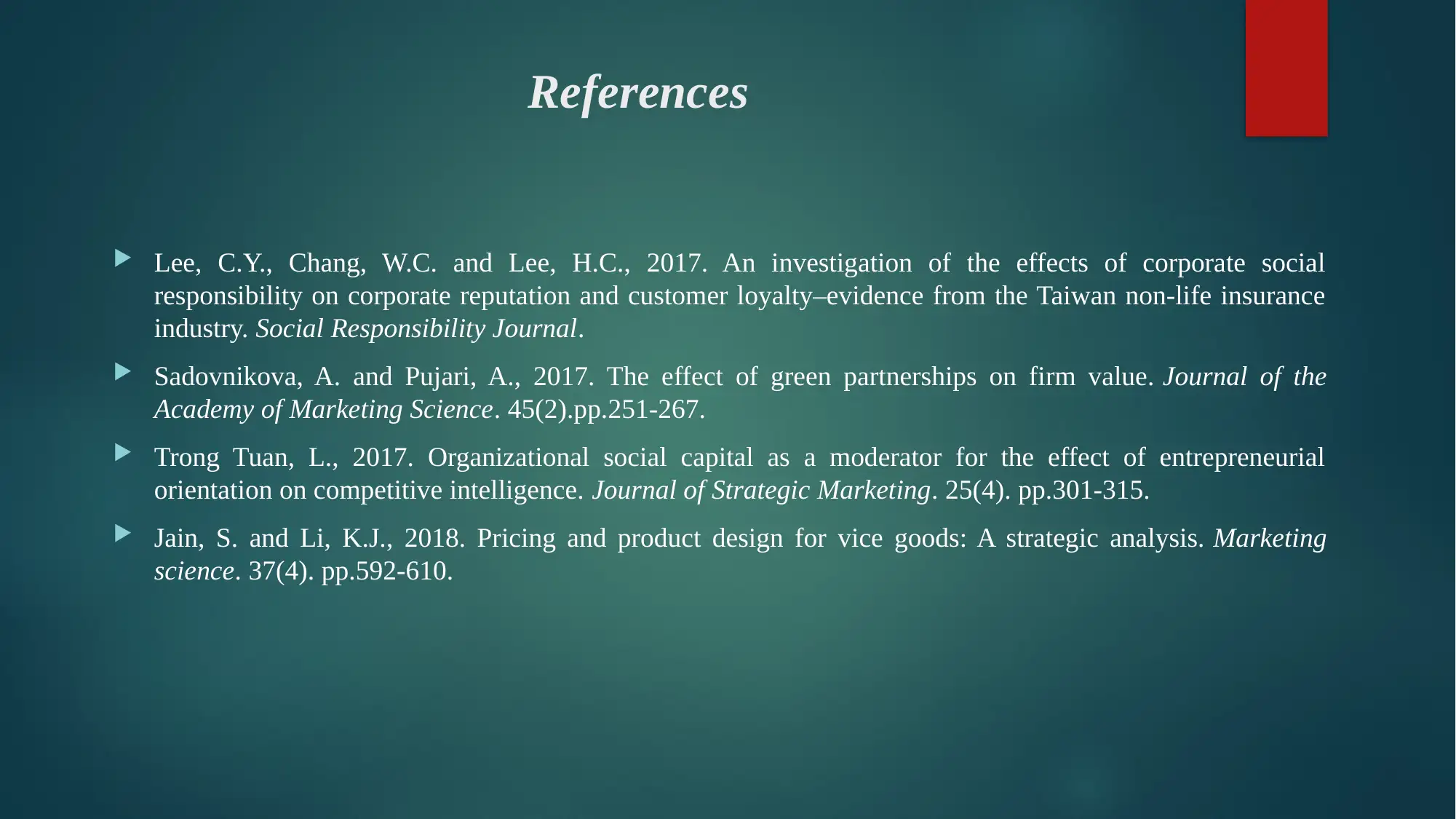
References
Lee, C.Y., Chang, W.C. and Lee, H.C., 2017. An investigation of the effects of corporate social
responsibility on corporate reputation and customer loyalty–evidence from the Taiwan non-life insurance
industry. Social Responsibility Journal.
Sadovnikova, A. and Pujari, A., 2017. The effect of green partnerships on firm value. Journal of the
Academy of Marketing Science. 45(2).pp.251-267.
Trong Tuan, L., 2017. Organizational social capital as a moderator for the effect of entrepreneurial
orientation on competitive intelligence. Journal of Strategic Marketing. 25(4). pp.301-315.
Jain, S. and Li, K.J., 2018. Pricing and product design for vice goods: A strategic analysis. Marketing
science. 37(4). pp.592-610.
Lee, C.Y., Chang, W.C. and Lee, H.C., 2017. An investigation of the effects of corporate social
responsibility on corporate reputation and customer loyalty–evidence from the Taiwan non-life insurance
industry. Social Responsibility Journal.
Sadovnikova, A. and Pujari, A., 2017. The effect of green partnerships on firm value. Journal of the
Academy of Marketing Science. 45(2).pp.251-267.
Trong Tuan, L., 2017. Organizational social capital as a moderator for the effect of entrepreneurial
orientation on competitive intelligence. Journal of Strategic Marketing. 25(4). pp.301-315.
Jain, S. and Li, K.J., 2018. Pricing and product design for vice goods: A strategic analysis. Marketing
science. 37(4). pp.592-610.
⊘ This is a preview!⊘
Do you want full access?
Subscribe today to unlock all pages.

Trusted by 1+ million students worldwide
1 out of 13
Related Documents
Your All-in-One AI-Powered Toolkit for Academic Success.
+13062052269
info@desklib.com
Available 24*7 on WhatsApp / Email
![[object Object]](/_next/static/media/star-bottom.7253800d.svg)
Unlock your academic potential
Copyright © 2020–2025 A2Z Services. All Rights Reserved. Developed and managed by ZUCOL.




